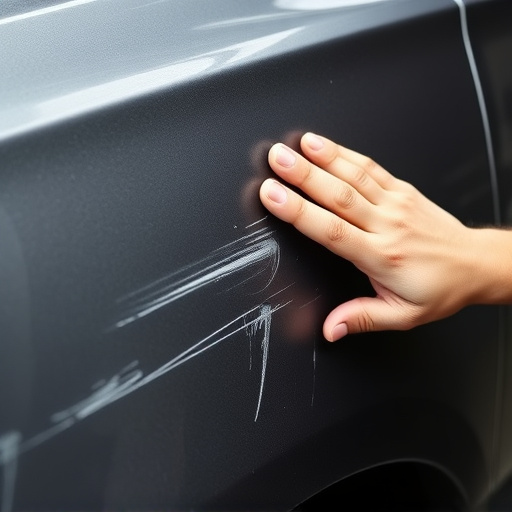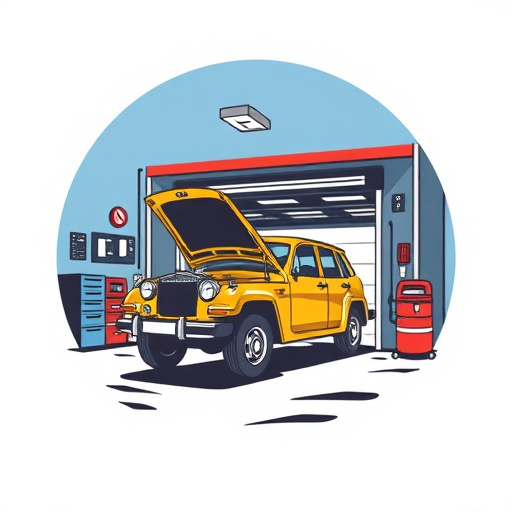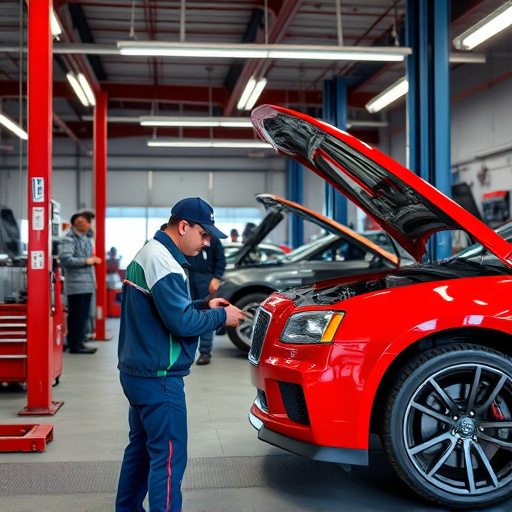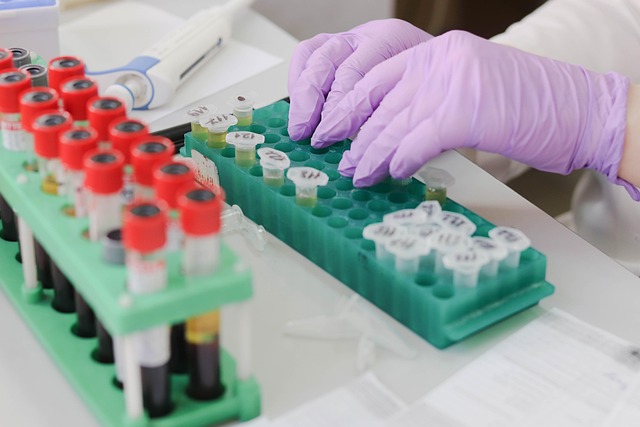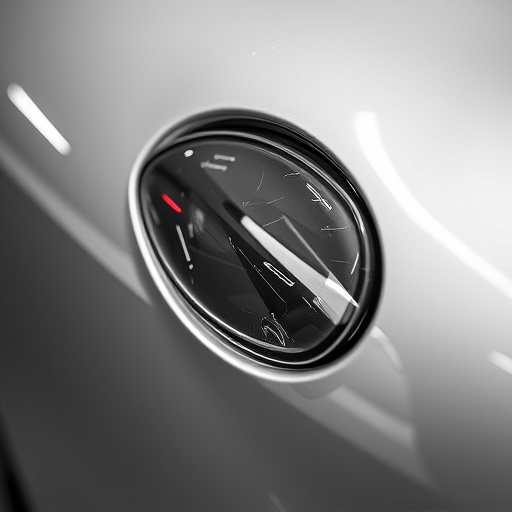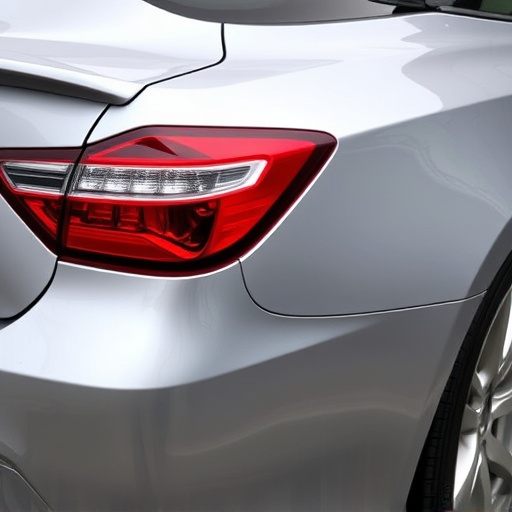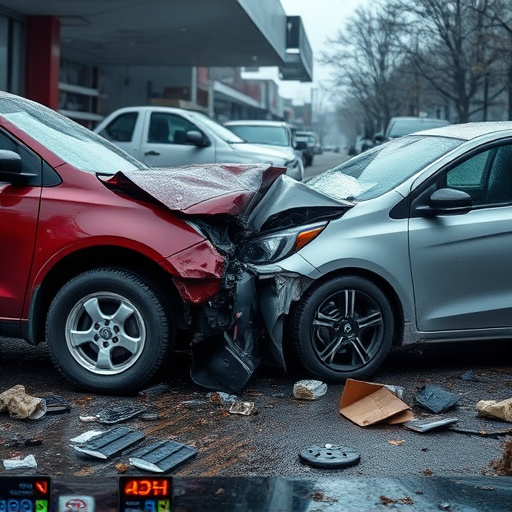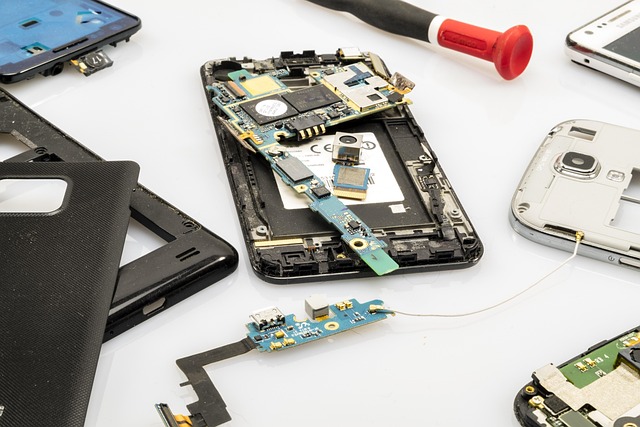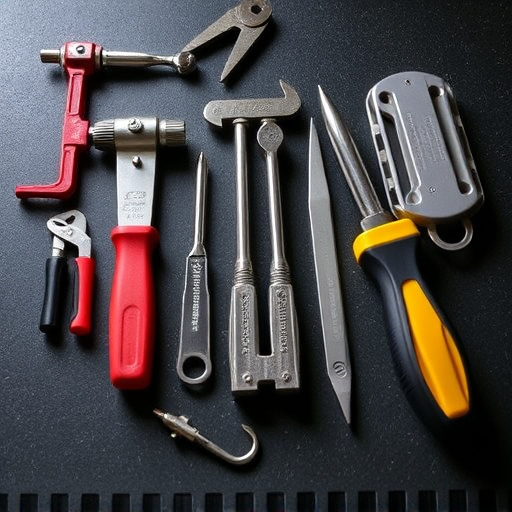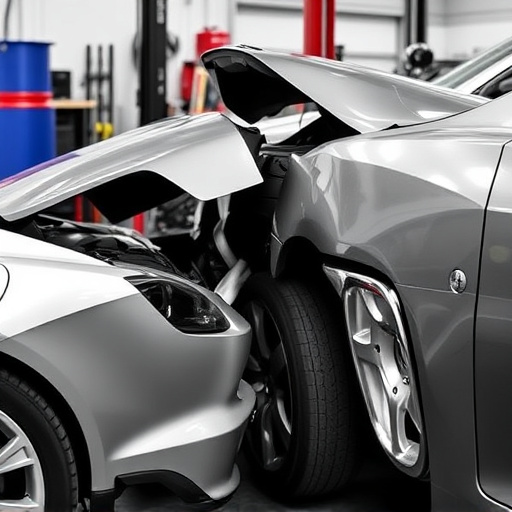Assessing metallic paint damage is crucial for auto maintenance, guiding tool and technique selection. Surface preparation involves washing, sanding, and applying primer to ensure better paint adhesion. Choosing compatible primers, paints, and solvents is key. Techniques range from touch-ups to advanced blasting methods, with meticulous detail for classic car restoration.
“Uncover the secrets to achieving flawless results in your metallic paint repair journey! This comprehensive guide breaks down the essential elements of proper preparation. From assessing damage to choosing the right materials, each step is crucial for a successful transformation. Learn how surface preparation, including key cleaning and sanding techniques, ensures a durable finish. Discover the art of selecting the ideal products and methods tailored to metallic paint repair. Get ready to restore your surfaces to their shimmering best.”
- Understanding Metallic Paint Damage Assessment
- Surface Preparation: Key Steps for Success
- Choosing the Right Materials and Techniques
Understanding Metallic Paint Damage Assessment
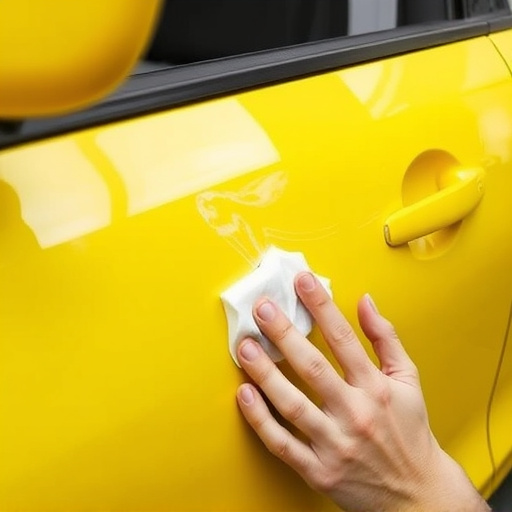
Assessing metallic paint damage is a crucial step in any metallic paint repair process. It involves meticulously examining the affected area to identify the extent and type of damage, which could range from minor scratches and chips to more severe dents and rust spots. This initial evaluation determines the course of action required for effective metallic paint repair.
Proper assessment ensures that the right tools and techniques are employed for fender repair or car damage repair. For instance, identifying rust early on dictates whether surface preparation will be as simple as sanding and cleaning or if more intensive auto maintenance is needed to mitigate its impact on the underlying metal structure. Understanding these nuances is key to achieving a seamless finish in any metallic paint repair job.
Surface Preparation: Key Steps for Success
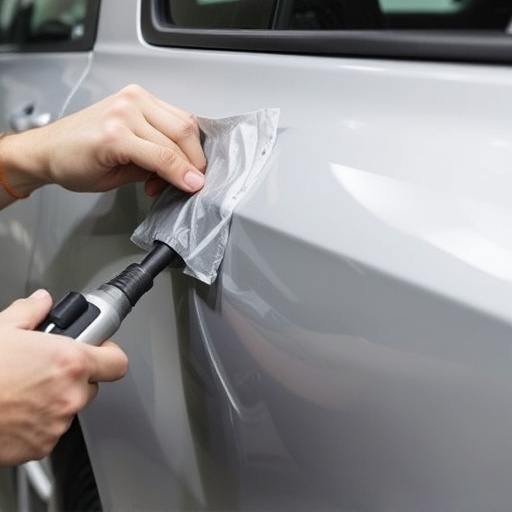
Surface preparation is a critical step in any successful metallic paint repair job. It’s not just about cleaning the surface; it involves removing all contaminants, smoothing rough spots, and ensuring the metal is free from grease, dust, and previous coatings. This meticulous process begins with thorough washing using specialized cleaners designed to cut through grime and dirt without damaging the underlying metal.
After washing, sanding comes into play to achieve a smooth finish. Coarse grits remove imperfections, while finer grits create a smooth canvas ready for application. It’s essential to choose the right tools, such as sandpaper or a power sander, and wear protective gear like gloves and a respirator. Once the surface is prepared, a primer acts as a barrier between the metal and paint, ensuring better adhesion and long-lasting results in auto painting and car restoration projects.
Choosing the Right Materials and Techniques
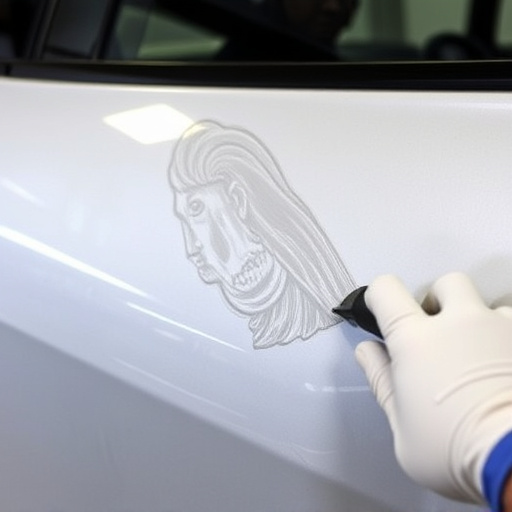
When tackling metallic paint repair, selecting the appropriate materials and techniques is paramount to achieving a flawless finish. The right tools can make all the difference in the outcome, so choosing products designed specifically for metal restoration is essential. This includes high-quality primers, paints, and solvents that are compatible with metallic surfaces. For instance, a dedicated automotive or classic car restoration shop might opt for industrial-grade materials to handle the unique challenges of fender repair or Mercedes Benz collision repair, ensuring durability and long-lasting results.
Techniques also vary based on the extent of damage and desired outcome. Small scratches or chips may only require a simple touch-up kit, while more extensive repairs involve steps like sandblasting or media blasting to smooth rough surfaces before applying new paint. For classic car restoration projects, attention to detail is crucial; using fine-grit sands and meticulous painting techniques can revive the original look and feel of the vehicle’s metallic finish.
In conclusion, successful metallic paint repair hinges on a thorough understanding of damage assessment, meticulous surface preparation, and the strategic selection of materials and techniques. By adhering to these key elements outlined in this article, you’ll lay the groundwork for achieving flawless, long-lasting results in any metallic paint repair project. Master these steps, and you’ll be well-equipped to handle various metal paint issues, ensuring your repairs not only match the original finish but surpass it.
